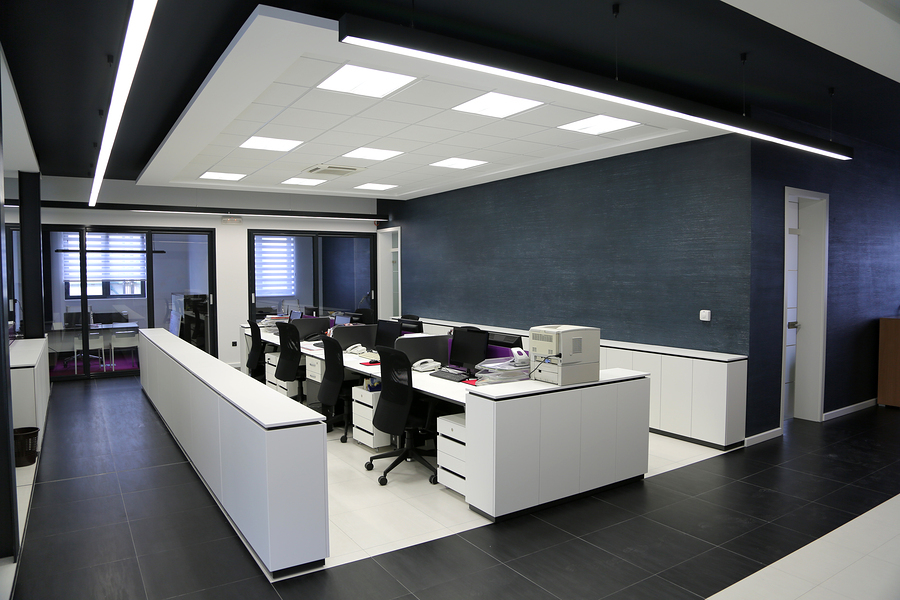ExactTarget found before being acquired by Salesforce. The company was able to attract younger talent in part because of its office design: an open arrangement with coffee bars and group workspaces complete with sofas. According to PSFK, such designs speak to millennials, who tend toward informality, collaboration and community when working. "I wanted to be part of a company that emphasized culture," said one ExactTarget recruit.

Design Expresses Corporate Culture
An office is a physical representation of a company and its culture, and its layout and features can enable or limit interaction. Similarly, choice of materials, color and design can say a lot about what a company finds important, whether that's glamour, formality, hipness or sustainability. Whimsical touches such as games, espresso machines and humorous accents give off a sense of fun. A more formal and restrained design might speak to a successful history. Expensive decor could convey prestige and upper-end clientele.
A study in the International Journal of Occupational Safety and Ergonomics found "significant correlations between job satisfaction, job and environmental factors." But there is no magic set of features or designs that will serve all companies. Instead, you should consider the people who work for you, the atmosphere you want to create, your operational realities and any current conditions.
The focus should be on creating the right emotional experience, according to Tim Kobe, CEO and founder of design firm Eight Inc., which has been responsible for Apple's retail stores for 18 years and works for a range of companies from startups to the Fortune 50. "If you're thinking about employees, you want to create an environment where you're interested in a certain emotional outcome," he said. Openness and plenty of natural light, for example, might produce a feeling of well-being and concern for employees' health. A counterexample is a work area with supervisors looking down from elevated positions at the periphery, stating through design that employees aren't trusted and must be watched.
Focus on Emotional Goals First
Companies should think about productivity along with well-being.
"You're higher up the evolutionary ladder. When you focus on those things, you do get the productivity and types of business outcomes you're looking for, but you get them by doing things that stimulate the most enjoyment and well-being for the person," said Kobe. Recent research from the University of Warwick showed that happiness made test subjects 12 percent more productive.
Because most people think at a functional level, they set functional objectives. Set the right emotional goals while ensuring that the practical is still possible. The results will be far more beneficial than you can believe. However, this means that you need to truly understand your workers. Age can play a role, but so can other factors that affect human culture, including socioeconomic background or geographic location. The type of industry will also be important. Banking customers might find it disturbing to walk into a branch in which the staff is lounging on beanbag chairs with laptops. Finding the right balance may be difficult if you employ up to four generations of workers or people from radically different professional and personal backgrounds.
Show Your Brand Value
Your company should combine the principles of happiness and well-being, which people from all generations and backgrounds are seeking, with expressions of its brand value. For example, if environmental preservation is important, use recycled materials in your office design. By expressing the company values and enabling the well-being of employees, you'll have a better chance of both finding and keeping the right people and connecting with customers on a deeper level. To get there, consider the following steps:
- Identify your company's fundamental values and goals.
- Consider the types of employees you currently have and that you're trying to reach.
- Speak with a design firm that has experience in creating office spaces. Be sure they understand how to address emotional goals, not just pragmatic ones.
- Talk to your existing employees. Ask them what features would help their work and make the workplace more pleasant or attractive.
Did your company design its current offices? If so, how heavily did management include employees in the process? If not, did your property's management offer different layout options? Tell us by commenting below.
Erik Sherman is an NCMM contributor and author whose work has appeared in such publications as The Wall Street Journal, The New York Times Magazine, Newsweek, the Financial Times, Chief Executive, Inc. and Fortune. He also blogs for CBS MoneyWatch. Sherman has extensive experience in corporate communications consulting and is the author or co-author of 10 books. Follow him on Twitter.